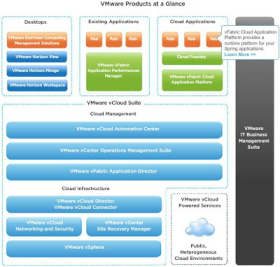ANSIBLE Installation / Setup :
Follow the below steps to setup / configure ansible on Linux box and test the setup.
1. Install and configure EPEL Repo
2. Install Ansible Package
3. Create ansbile user and
4. Enable ssh password less login
5 Configure inventry file for ansible
6. Create an Ansible Playbook
7. Run the Playbook and test
STEP 1: Install EPEL Repo on a CentOS and RHEL 7.x
Method 1 :
#yum update
#yum install epel-release
#yum repolist
Method 2 :
#yum install epel-release
#yum repolist
Method 2 :
#yum update
#wget https://dl.fedoraproject.org/pub/epel/epel-release-latest-7.noarch.rpm
#yum install epel-release-latest-7.noarch.rpm
#yum repolist
Install EPEL Repo on RHEL8.X Linux Box:
# yum install https://dl.fedoraproject.org/pub/epel/epel-release-latest-8.noarch.rpm
To check the epel repo by using below command
#yum --disablerepo="*" --enablerepo="epel" list available | grep 'package'
STEP 2: Install Ansible Packages
A. Install ansible on a RHEL/CentOS Linux :
#yum update
#yum install ansible
#ansible --version
B. Install ansible on a Debian/Ubuntu Linux :
#apt-get install software-properties-common
#apt-add-repository ppa:ansible/ansible
#apt-get update
#apt-get install ansible
# ansible --version
C. Install Ansible Using Python (PIP)
#pip install ansible
D. Install the latest version of ansible using source code
#git clone git://github.com/ansible/ansible.git
#cd ./ansible
#source ./hacking/env-setup
When running ansible from a git checkout, one thing to remember is that you will need to setup your environment everytime you want to use it, or you can add it to your bash rc file:
#wget https://dl.fedoraproject.org/pub/epel/epel-release-latest-7.noarch.rpm
#yum install epel-release-latest-7.noarch.rpm
#yum repolist
Install EPEL Repo on RHEL8.X Linux Box:
# yum install https://dl.fedoraproject.org/pub/epel/epel-release-latest-8.noarch.rpm
To check the epel repo by using below command
#yum --disablerepo="*" --enablerepo="epel" list available | grep 'package'
STEP 2: Install Ansible Packages
A. Install ansible on a RHEL/CentOS Linux :
#yum update
#yum install ansible
#ansible --version
B. Install ansible on a Debian/Ubuntu Linux :
#apt-get install software-properties-common
#apt-add-repository ppa:ansible/ansible
#apt-get update
#apt-get install ansible
# ansible --version
C. Install Ansible Using Python (PIP)
#pip install ansible
D. Install the latest version of ansible using source code
#git clone git://github.com/ansible/ansible.git
#cd ./ansible
#source ./hacking/env-setup
When running ansible from a git checkout, one thing to remember is that you will need to setup your environment everytime you want to use it, or you can add it to your bash rc file:
# echo "export ANSIBLE_HOSTS=~/ansible_hosts" >> ~/.bashrc
# echo "source ~/ansible/hacking/env-setup" >> ~/.bashrc
STEP 3: Configure User for Ansible
#useradd admin
#passwd admin
#visudo
Type 'i' to enter input mode and add the following to the end of the file. Type '[ESC]:wq' to save your changes.
admin ALL=(ALL) NOPASSWD: ALL
STEP 4: Configure our Admin User for SSH Access
Login as "admin" user and run below commands.
#ssh-keygen -t rsa
#ssh-copy-id targetnode.company.com ( copy the key file to target nodes)
To Test the connection
#ansible targetnode.company.com -m ping
STEP 5: Create an Ansible Inventory
Ansible requires an inventory list so it can identify your managed nodes. To add our managed node to the inventory, we need to login to our Control node as the admin user. Next, we will add a new inventory file. Make sure you are logged onto the Control node as the admin user.
Note : By default ansible use the host file at - /etc/ansible/hosts.
#vi /home/admin/inventory
Type 'i' to enter insert mode and add the managed node hostname to the inventory file.
node.mycompany.com
Next, type '[ESC]:wq' to save the file.
STEP 6: Create an Ansible Playbook
To test our configuration, we will create a simple playbook to install Nginx on our managed node. First, we will create and open a new file.
#vi /home/admin/install-nginx.yml
add below lines and save the file
----
### Install nginx
- hosts : node.mycompany.com
become: yes
tasks:
name: Install epel package
yum:
name: epel-release
state: installed
name: Install nginx package
yum:
name: nginx
state: intalled
STEP 7: Run the Playbook and test
Running a playbook is rather easy. We use the "ansible-playbook" command and then specify the inventory file with the "-i" option followed by the path to the playbook.
# echo "source ~/ansible/hacking/env-setup" >> ~/.bashrc
STEP 3: Configure User for Ansible
#useradd admin
#passwd admin
#visudo
Type 'i' to enter input mode and add the following to the end of the file. Type '[ESC]:wq' to save your changes.
admin ALL=(ALL) NOPASSWD: ALL
STEP 4: Configure our Admin User for SSH Access
Login as "admin" user and run below commands.
#ssh-keygen -t rsa
#ssh-copy-id targetnode.company.com ( copy the key file to target nodes)
To Test the connection
#ansible targetnode.company.com -m ping
STEP 5: Create an Ansible Inventory
Ansible requires an inventory list so it can identify your managed nodes. To add our managed node to the inventory, we need to login to our Control node as the admin user. Next, we will add a new inventory file. Make sure you are logged onto the Control node as the admin user.
Note : By default ansible use the host file at - /etc/ansible/hosts.
#vi /home/admin/inventory
Type 'i' to enter insert mode and add the managed node hostname to the inventory file.
node.mycompany.com
Next, type '[ESC]:wq' to save the file.
STEP 6: Create an Ansible Playbook
To test our configuration, we will create a simple playbook to install Nginx on our managed node. First, we will create and open a new file.
#vi /home/admin/install-nginx.yml
add below lines and save the file
----
### Install nginx
- hosts : node.mycompany.com
become: yes
tasks:
name: Install epel package
yum:
name: epel-release
state: installed
name: Install nginx package
yum:
name: nginx
state: intalled
STEP 7: Run the Playbook and test
Running a playbook is rather easy. We use the "ansible-playbook" command and then specify the inventory file with the "-i" option followed by the path to the playbook.
Make sure you are logged onto the control node as the admin user.
#ansible-playbook -i /home/admin/inventory /home/admin/install-nginx.yml
#ansible-playbook -i /home/admin/inventory /home/admin/install-nginx.yml




2 Comments
E2CCBFAE60
ReplyDeletekiralık hacker
hacker arıyorum
belek
kadriye
serik
DE1E66732A
ReplyDeleteWhatsapp Ücretli Şov
Görüntülü Show
Webcam Show